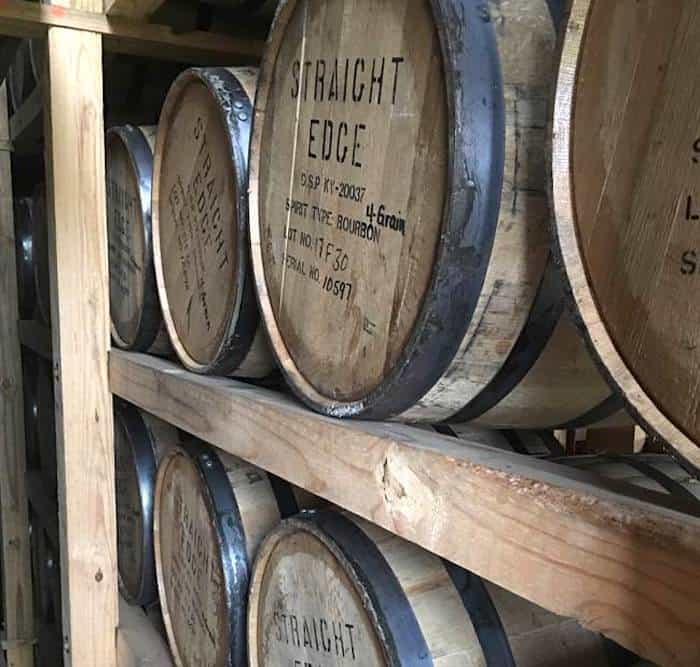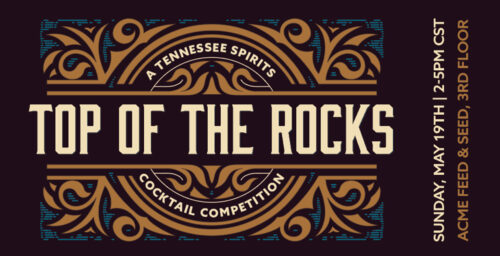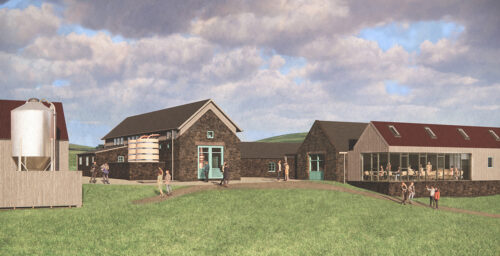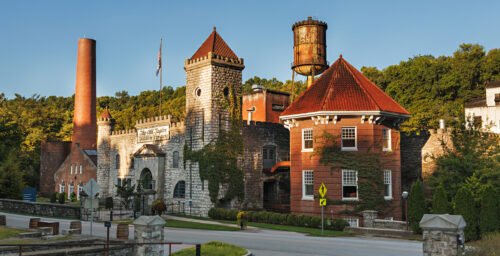To say that new whiskey “rests” in barrels is a mite deceptive. That rest is really an active exchange between elemental substances in the spirits and the oak barrels themselves, and that exchange, when orchestrated with attention and care, can deliver the high-note bouquets, middle-mouth spices and sweet, zesty or mellow finishes found in fine whiskeys.
Napa Valley wine folks know their wines and they know their barrels. Napa’s Splinter Group, formed from the wine industry intelligentsia, got together a few years ago to source unaged whiskey into used Napa Valley wine barrels. Splinter is now owned by Napa’s Vintage Wine Estates, and they produce an American whiskey, a bourbon and a rye.
We spoke to John Wilkinson, Managing Partner at The Splinter Group, about the practical and the philosophical aspects of whiskey-making at The Splinter Group.
Do you source the un-aged spirits from multiple distilleries? Any hints on those names, or locations?
When we first got started five years ago we established great relationships with a number of distilleries in Kentucky and Tennessee. We have continued to work with these great producers until our own spirits are aged and ready for market. For the last couple years, we have been laying down hundreds of barrels annually (with our own custom mash bills) with only one distillery, Bardstown Bourbon Company.
Do you specify the mash bills and proof of those spirits before they come to Splinter? Can you give me any info on the mash bills (and any distillation processes, like column stills or pot stills, filtration, yeasts, etc.) of the various Splinter whiskeys?
Up to now, we have sourced whiskies that we love, and work with those mash bills to fit with our flavor profiles. Our master blenders Steve Matthiasson and Bob Cabral have been instrumental in helping define our style. All the spirits are brought to Napa, California, to the Bin to Bottle Winery, where we age all our spirits for an additional one and a half to three years in experienced French oak barrels. We proof with pure, artisanal, spring water from Moon Mountain in Sonoma California and cold filter at 29 degrees.
For our custom distillations we do custom mash bills with BBC in their state-of-the-art facility, utilizing their Vendome column still. We are doing some really interesting things. The last three cooks included:
- Four Grain– 60% Corn, 26% Rye, 10% Wheat, 4% Malt
- Three Grain– 68% Corn, 20% Wheat, 12% Malt
- Organic Cook–70% Corn, 20% Rye, 10% Malt
We love working with Steve Nally and John Hargrove at BBC to define our cook and fermentation protocols. They both come with years of knowledge and experience and know how to make their still deliver the goods. Our cook, fermentation and aging processes are proprietary. These barrels are aging in Bardstown’s rickhouses.
I see on your site that you worked with some North Carolina corn for some of the liquors. Are you working with other farmers to source grains, like rye?
We work with a number of farmers in Kentucky and Tennessee. All grains are non-GMO. For our last all-organic cook, we sourced both corn and rye from Ben Haines from Looking Back Farms in Tyner, NC. We love working with family farms and farmers and we hope to continue to work with Ben for years to come (and others like him).
Where are the whiskeys aged and for how long? Do you age in 53-gallon barrels, or bigger and/or smaller barrels?
Our current portfolio of whiskies are a wide variety of ages—from new whiskies to nine years old. We then bring them “home” to the Napa Valley where they are re-gauged into 60-gallon French Oak wine barrels that previously held Williams Selyem Pinot Noir made by Bob Cabral, or Steve Matthiasson Cabernet Sauvignon.
At Bardstown, we will age for three to five years in traditional, 53-gallon, charred American oak (char 3). When we’re ready for these, we will bring them home to Napa for our unique finishing aging.
Which used wine barrels are used for which whiskeys? On the site, it says that Mr. Cabral selects French oak—do you get used barrels from other Napa wine operations as well?
The coopers vary, but the barrels are always from Bob Cabral and Steve Matthiasson, two of Northern California’s most awarded winemakers. What separates us from others aging in French oak is not just the wonderful wines that were previously stored in the barrels, but the quality of the coopers. Each cooper and the oak they choose bring different flavors. Makers like Francois Freres, Taransaud, Darnajou and Marcel Cadet make a huge difference in what they impart to the whiskey. These are some of the top coopers in France and their barrels are priced as such. Bob actually travels to the oak forests of France to select the trees that are used for the stave wood in his barrels.
Do you experiment with mixing the wine-origin barrel types with the same type of whiskeys—that is, the bourbon might stay in a pinot barrel for a while, and a cab barrel as well, and do you experiment with time-in-barrel as well?
Which barrels we choose to use, time in the barrel, the temperature we store at, etc., are all important, as is the process from preparing the barrel from previously storing wine to now aging whiskey. The wine varietal previously stored does make a difference and we experiment. For instance, pinot noir barrels impact the aromatics more than cabernet sauvignon barrels.
Where do the thoughts and methods of making good wine and making good whiskey merge and where do they verge? Is there a whiskey-making philosophy or mission at Splinter?
Our guiding principle is “whiskey respectfully reimagined by seasoned winemakers.” We knew from the start that we wanted to work with master distillers that elevate our efforts and skills. We are so lucky to work with master distillers like Steve Nally and John Hargrove that can bring more to the process (and team) on the distilling side then we bring ourselves. Yet our knowledge of French oak and how it can be integrated into wine or whiskey is second to none. The integration of oak in wine is subtler.
Winemakers’ palates and noses trained in the art and science of winemaking bring a new approach to oak integration in whiskey aging. Bob Cabral’s ability to select the right French oak trees for stave wood for his wine program and ultimately our whiskeys will ensure consistent flavor and aromatic direction. Steve Matthiasson’s deep knowledge of sustainable farming and family farms will be integral to our continuing to source the best grains for our whiskeys.
What plans does Splinter have for its whiskeys? Building a distillery in mind, a tasting room, partnerships with other distillers?
We will continue to grow the brand. We are only five years old and have Straight Edge Bourbon, Slaughter House American Whiskey, Whip Saw Rye (introduced in February) and Partner Sweet Vermouth (introduced in 2017). We plan to release a special 12-year-old before the end of the year—be on the lookout for it!
A lot of research and trials went into developing our whiskey profiles. They have an abundance of one or more of the following: honey, baking spices, vanilla, dried fruits, caramel, butterscotch, crème brûlée, etc. Our customers have responded really well to these flavors and aromas. We will continue to concentrate on grain-to-bottle production, focusing on what we know and do best. We are experienced in farming and working with sustainable farmers. We know oak. We know aging. Working with a distiller partner like Bardstown, we have put a team together that is best-in-class in their respective skills.









